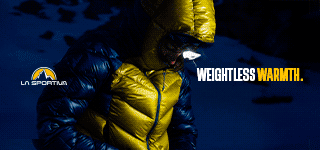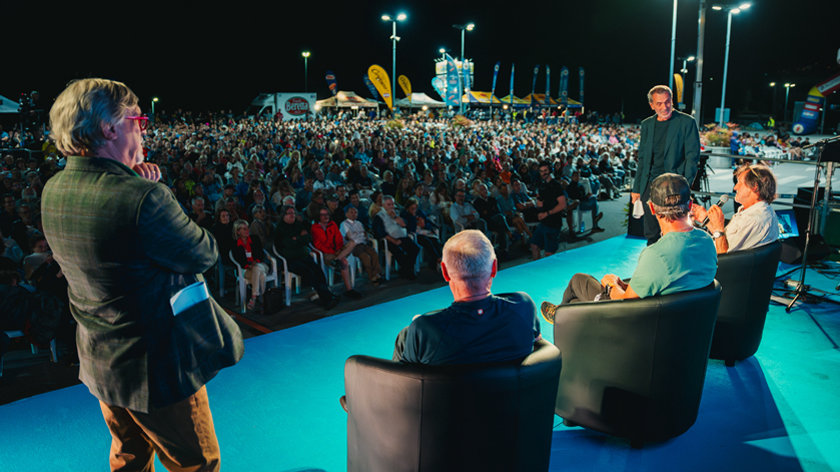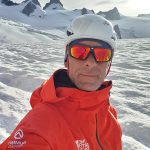Words by: Luca Calvi e Vinicio Stefanello
Wielick, Kammerlander, and Moro are among the mountaineers who have written the history of the discipline on the planet’s highest mountains. Some did it solo, some in winter, some with speed records, some even descended them on skis. DF Sport Specialist invited all three to a grand evening of “Face to Face with the Greats of Sport,” an unforgettable event, during which Luca Calvi and Vinicio Stefanello conversed with them, recounting tragic and amusing anecdotes, as only the mountains can bring to life.
4Outdoor è anche su Whatsapp. È sufficiente cliccare qui per iscriversi al canale ed essere sempre aggiornati.
Krzysztof Wielick
How did the Poles become the Poles?
I don’t know, you know, probably because we missed the beginning of the history of high-altitude mountaineering, from the ’50s to ’64, and when we realized it, in the ’70s we had to look for something original, something that no one had done yet: winter ascents.
Our Alpine Club obtained permits for an expedition to the Himalayas, and at that point we set our sights on the highest mountain: Everest.
The other members of the team already had decades of experience in high mountain climbing, I had none at all, but we were a team, no matter who reached the summit, the team worked towards that goal.
We had a permit valid until February 17th, and we reached the summit that very day. It was a joy for all of us and for all of Poland. Even today, it’s not said that it was an achievement by Krzysztof Wielick and Leszek Cichy, it was an achievement by the Poles, the first eight-thousander, and the highest, climbed in winter.
Once this taboo was broken, over the next six years Polish teams climbed another six 8,000-meter peaks in winter. This is why we call ourselves the Ice Warriors.
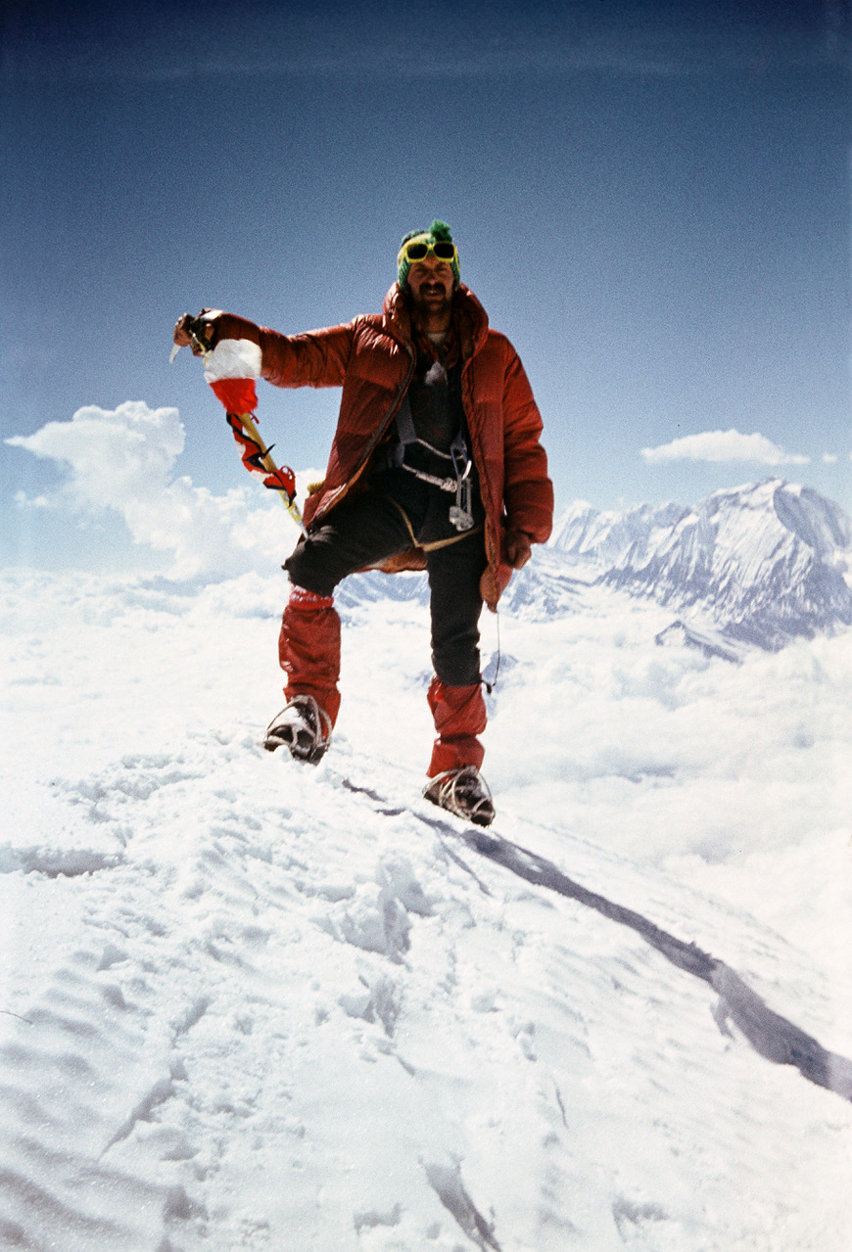
Krzysztof, you’re not only famous for your winter ascents but also because at a certain point in your career you started doing solo climbs. Tell us about this aspect of your mountaineering style.
Well, actually, I’ve never left home without my mountaineering friends; we’ve always set out in a group. The thing is, sometimes, during an expedition, I’d be in excellent physical condition, and since I didn’t have any group commitments, it felt natural to set out alone for the summit. That’s what happened on Brad Peak in 1984, when I completed the ascent and descent solo in 22 hours, or in 1990 when I established a new route on Dhaulagiri in 16 hours from base camp to the summit, or on Shisha Pangma, always a new route up the south face.
Many people have asked me why I did all this, and the answer I gave myself was that I was really hungry for excitement. I needed an adrenaline rush.
Is there an expedition or summit that you consider fundamental to your career?
The one on Nanga Parbat, my 14th eight-thousander.
Yes, but before climbing it you went to acclimatize on K2, North Edge, with Christian Kuntner and Marco Bianchi, Japanese route!
Yes, I must specify that it was not in my plans to complete the crown of the Himalayas, that had been a goal of Reinhold Messner and Jerzy Kukuczka, but at a certain point the Polish Alpine Club pointed out to me that I had climbed 12 of them and it was stupid not to do the other 2 as well.
So I thought, okay, how can I do that? I’d have to climb two 8,000-meter peaks in one season. So I invited Bianchi and Kuntner to K2, aiming for the north, Chinese side, but going early, in June. This was to be able to join the Polish expedition that would be on Nanga Parbat in July and would be setting up the face.
On K2, I had a satellite phone for the first time, made by an Italian company, the size of a suitcase. I called the president of my Alpine Club to confirm the K2 summit and ask about the Nanga Parbat expedition, but he told me they hadn’t reached the summit due to bad weather and had returned home. All the 1996 expeditions had abandoned Nanga Parbat, and out of fear, I was looking for an excuse to leave myself. But the weather was always good, day after day, so at a certain point I made up my mind, even though I didn’t even know which direction to take.
I was scared that time. I was completely alone. How could I prove I’d been to the summit? I looked for something on that peak that could prove it, but there were only stones, ordinary stones.
But I was lucky, I found a bronze nail, with an engraving: Austria 1976.
This is how I completed my Himalayan Crown but I believe there are more interesting challenges for mountaineers than this record.
Hans Kammerlander
You were a great mountaineer but also a great steep skier. How did this passion begin?
I was born in the Aurina Valley, South Tyrol, on a small mountain hut with no electricity, and as children, my brothers and I worked there. In the little free time we had, I enjoyed skiing downhill on some skis my father had made out of wood. This was how my great passion was born.
If I think about my life I can say that I’ve worked really hard, but when I haven’t worked I’ve made a huge mess (laughs, and with him the whole audience, editor’s note).
For example, when I was eight years old, one day I was on my way to school. The weather was beautiful, so I decided to change my plans and go to my first summit, a peak over 3,000 meters above the village. I started climbing that day.
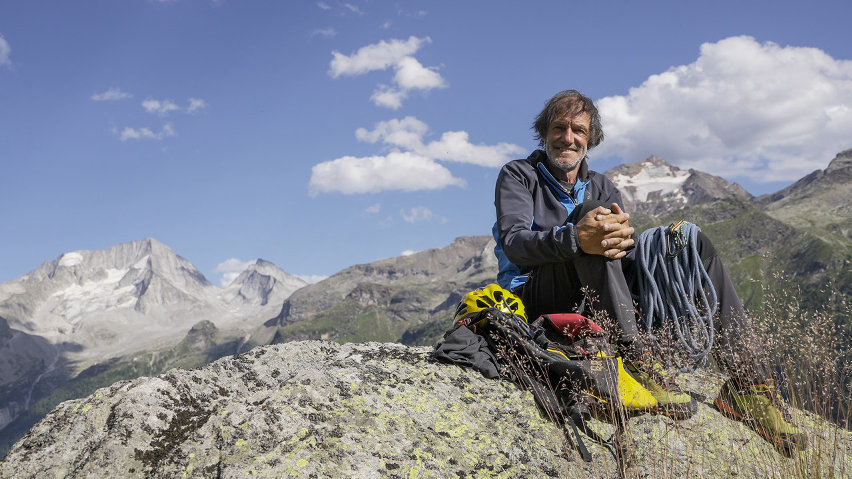
Your Everest, Hans. You climbed it from the north, in 16.45 hours (an unbeaten record), and once at the top, you skied down. Can you tell us about it?
As a young man, I didn’t have the opportunity to go on expeditions to the Himalayas. I was a bricklayer, but I knew it wasn’t what I wanted for my life. I started training, and at twenty, I took the Alpine Guide exam. I started working for Reinhold Messner’s mountaineering school, and at a certain point, he suggested we climb an 8,000-meter peak together.
I had no high-altitude experience, having only been on Mont Blanc at most, but I thought Reinhold’s vast experience would help me. So we climbed Cho Oyu in the winter of 1983. We didn’t reach the summit; it was too cold and too windy.
When I hear stories of Krzysztof or Simone, their winter climbs, I can’t help but feel great admiration. In those conditions, it’s truly impossible. And often even in spring.
In four years with Messner we climbed Gashermum I and II (the first 8,000-meter peak), Dahulagiri and Annapurna, Makalu and Lothse.
Can you tell us about that connection?
It was a very tough experience. We were alone, without Sherpas, for eight days, often in storms. Messner was the one of the two with the most experience, but it was my intuition to start from Gasherbrum II.
It was wonderful to climb in the Himalayas in those years, we were almost always alone, something that is no longer experienced today.
After the Lothse and seven shared 8,000-meter peaks, in 1986 (which was Messner’s 14th eight-thousander) our paths diverged.
It was very complicated for me because up until then he had taken care of everything from an organizational point of view, including raising most of the funds needed for the expeditions.
It was then that I changed my idea of mountaineering which from then on would be combined with ski descents.
Everest and Nanga Parbat, you skied both of them once you reached the summit, what can you tell us about them?
I skied Everest in 1996, but six years earlier I had done Nanga Parbat with Diego Wellig. For me, Nanga Parbat represented the limit; it was less high but even steeper than Everest, and a fall would have meant “never having a toothache again” (laughter from the audience, ed.).
That’s where the descent was almost ending in tragedy, right?
Yes, already 50 m below the summit I was ski-ing and triggering a huge avalanche that rolled down the gully.
How do you climb Everest in record time and then descend with your…
I trained a lot for my projects, spending the winters training in the Dolomites on skis, and I even went trekking in Nepal, walking for a month up to 5,000 meters, to boost my motivation. Nepal is a magical place for this.
Feci lo Shisha Pangma per acclimatarmi nel 1996 e poi direttamente l’Everest.
Why did you climb Everest alone?
I was accompanied by two Italian friends up to 7,000 meters, then I was left alone. I didn’t want to bivouac or carry everything I needed to do so. I took nothing except a liter of tea. My backpack weighed less than 5 kg, including my skis.
What do you remember about the first curves on that mountain?
It was one of the most intense moments of my life. When I took off my crampons at the summit and clipped on my skis, I felt so tired. I hesitated for a long time before starting, but then everything got much easier. It took me six hours to descend, stopping every 10 meters. It wasn’t really skiing, more like sliding. But it was my dream, and I made it happen.
Simone Moro
After Krzysztof and Hans, it’s your turn on stage. What can you tell us?
Well, compared to two giants like this, I feel like a dwarf. Wielick, Kammerlander, along with Messner and Anatoly Bukreev, were a huge source of inspiration for me; they were role models and teachers.
I’ve always considered it essential to have role models, someone to help you chart your path, and once you’ve done that, to have a mentor to help you follow it. Kammerlander said today that at the beginning of his career he was helped by the great experience of Reinhold Messner. Reinhold helped him become what he became, not a copy of someone else. Wielick said the same thing; when you reminded him that he climbed with Jerzy Kukuczka, he replied that Kukuczka was a giant of mountaineering.
For me, coming after generations of Cassin, Bonatti, Messner, and others was a great inspiration, but at the same time, these great names had already accomplished almost all the great feats. I had to find something new, my own dimension.
The Poles, coming from a country without any great mountains (in terms of height) and disadvantaged by a difficult economic situation, inspired me to climb winter. And so did the fact that Messner and Kammerlander had failed to climb Cho Oyu and Makalu (in winter).
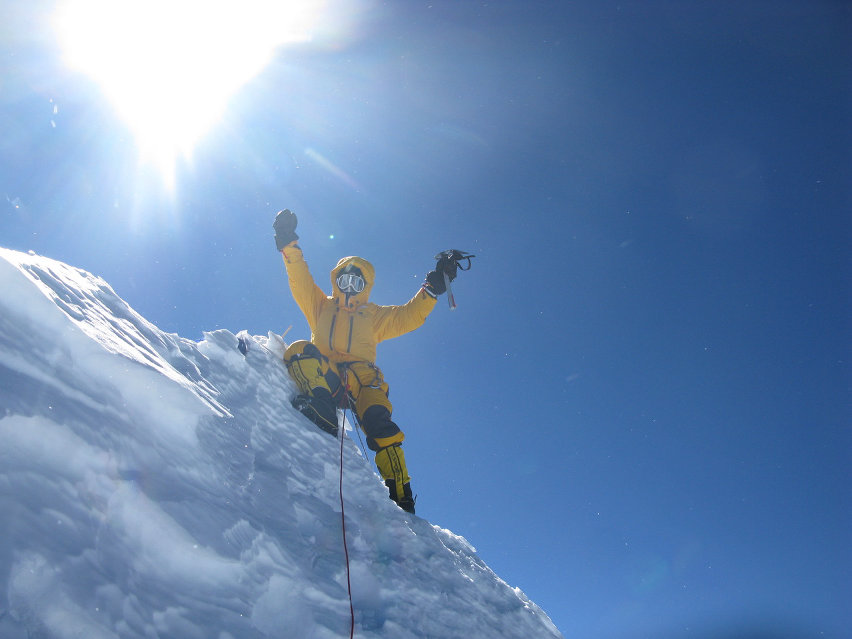
You managed to climb Makalu in winter!
Yes, I climbed it and to date, on that mountain, it was the lightest expedition in history, because there was only me, Denis Urubko and a cook (who remained at base camp).
How did you manage to climb Makalu so quickly?
I had a special companion: Denis Urubko. These days, expeditions are often organized between climbers who have never even met and know each other at base camp, but the great feats were achieved by teams where the climbers were, above all, friends. Denis and I climbed together for ten years, and we were an ideal team.
When did you realize that Denis was your ideal climbing partner?
In the late 1990s, my climbing partner was Anatoly Bukreev. A wonderful person and one of the greatest mountaineers of all time. Before Annapurna, I had spoken with Sergio Longoni and promised to introduce him to the Italian public, but from that year’s expedition, 1997, he and Dmitry Sobolev never returned. I loved Anatoly as a teacher and a special person, and when he passed away, I wanted to go back to where he came from: Kazakhstan.
There I met Denis Urubko and realized he was an ideal climbing partner. He slept on the streets, on benches. He knew hunger, hardship, and had a great dream of becoming a mountaineer.
There I met Denis Urubko and realized he was an ideal climbing partner. He slept on the streets, on benches. He knew hunger, hardship, and had a great dream of becoming a mountaineer.
Some open questions to the three climbers
What is left for young people to do, how has mountaineering changed?
Kammerlander – It’s not easy for young people to choose a goal. We had a world to explore: first ascents, winter ascents, ski descents, but there’s still a lot to do and the young people are very strong.
Wielick – I believe that great exploratory mountaineering no longer exists. In the sense that now great feats are only accessible to professional climbers. We were amateurs striving to reach the summit; now the goal is difficulty, conquering a face, pursuing a particular style. The philosophy of mountaineering has changed.
Moro – Mountaineering isn’t dead, and there are young climbers realizing wonderful projects, like Matteo della Bordella, Simon Gietl, Francois Cazzanelli, and Simon Messner, to name a few that come to mind. There are 6,000- or 7,000-meter peaks with unclimbed routes, on which to achieve truly remarkable feats.
Mountaineering isn’t dead, not even on the 8,000-meter peaks, because although, as Hans said, there are times when it’s like a carnival, a change of season is enough to overturn the rules of the game, and no one has yet managed to climb the Corona in winter or ski down them. These young mountaineers will also have the task of communicating mountaineering in a new way, through new media; they will have to succeed in inspiring the public to be passionate and dreamy, as we have done.
